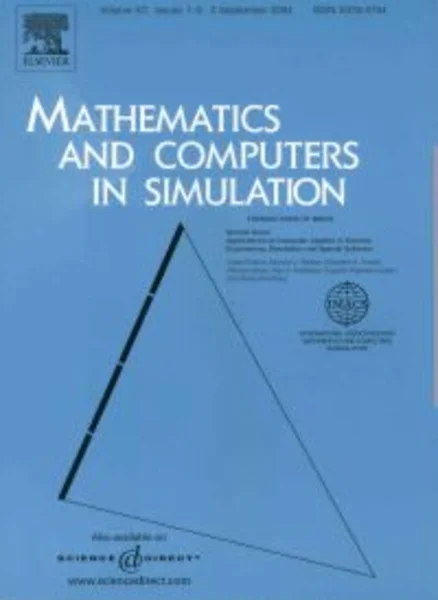-
parallel collision detection of ellipsoids with applications in large scale multibody dynamics
جزئیات بیشتر مقاله- تاریخ ارائه: 1390/12/01
- تاریخ انتشار در تی پی بین: 1390/12/01
- تعداد بازدید: 274
- تعداد پرسش و پاسخ ها: 0
- شماره تماس دبیرخانه رویداد: -
this contribution describes a parallel approach for determining the collision state of a large collection of ellipsoids. collision detection is required in granular dynamics simulation where it can combine with a differential variational inequality solver or discrete element method to approximate the time evolution of a collection of rigid bodies interacting through frictional contact. the approach proposed is structured on three levels. at the lowest level, the collision information associated with two colliding ellipsoids is obtained as the solution of a two-variable unconstrained optimization problem for which first and second order sensitivity information is derived analytically. although this optimization approach suffices to resolve the collision problem between any two arbitrary ellipsoids, a less versatile but more efficient approach precedes it to gauge whether two ellipsoids are actually in contact and require the more costly optimization approach. this intermediate level draws on the analytical solution of a 3rd order polynomial obtained from the characteristic equation of two arbitrary ellipsoids. finally, this intermediate level is invoked by the outer level only when a 3d spatial binning algorithm indicates that two ellipsoids share the same bin (box) and therefore could potentially collide. this multi-level approach is implemented in parallel and when executed on a ubiquitous graphics processing unit (gpu) card scales linearly and yields a two orders of magnitude speedup over a similar algorithm executed on the central processing unit (cpu). the gpu-based ellipsoid contact detection algorithm yields a 14-fold speedup over a cpu-based sphere contact detection algorithm implemented in the third party open source bullet physics library (bpl). the proposed methodology provides the efficiency demanded by granular dynamics applications, which routinely handle scenarios with millions of collision events.
مقالات جدیدترین رویدادها
-
استفاده از تحلیل اهمیت-عملکرد در ارائه الگوی مدیریت خلاقیت سازمانی و ارائه راهکار جهت بهبود
-
بررسی تاثیر ارزش وجوه نقد مازاد بر ساختار سرمایه شرکت های پذیرفته شده در بورس اوراق بهادار تهران
-
بررسی تأثیر سطح افشای ریسک بر قرارداد بدهی شرکت های پذیرفته شده در بورس اوراق بهادار تهران
-
بررسی تأثیر رتبه بندی اعتباری مبتنی بر مدل امتیاز بازار نوظهور بر نقد شوندگی سهام با تأکید بر خصوصی سازی شرکت ها
-
تأثیر آمیخته بازاریابی پوشاک ایرانی بر تصویر ذهنی مشتری پوشاک ایرانی (هاکوپیان)
-
بررسی استانداردهای epa آمریکا در خصوص استفاده از لجن تصفیه خانه های فاضلاب در زمین های کشاورزی
-
اقتباس و اشارات در الاهی نامه عطار نیشابوری
-
انتخاب یک شبکه یکپارچه دوچرخه بر مبنای شاخص های کلان و خروجی های نرم افزار emme/2 در شهر تهران
-
یک شیوه تشخیص ناهنجاری ترکیبی مبتنی بر میانگین- واریانس و چندمتغیری بر اساس ترافیک arp در شبکه های سازمانی
-
pem fuel cell low flow fdi
مقالات جدیدترین ژورنال ها
-
مدیریت و بررسی افسردگی دانش آموزان دختر مقطع متوسطه دوم در دروان کرونا در شهرستان دزفول
-
مدیریت و بررسی خرد سیاسی در اندیشه ی فردوسی در ادب ایران
-
واکاوی و مدیریت توصیفی قلمدان(جاکلیدی)ضریح در موزه آستان قدس رضوی
-
بررسی تاثیر خلاقیت، دانش و انگیزه کارکنان بر پیشنهادات نوآورانه کارکنان ( مورد مطالعه: هتل های 3 و 4 ستاره استان کرمان)
-
بررسی تاثیر کیفیت سیستم های اطلاعاتی بر تصمیم گیری موفق در شرکتهای تولیدی استان اصفهان (مورد مطالعه: مدیران شرکتهای تولیدی استان اصفهان)
-
ارزیابی عملکرد کارکنان با استفاده از مدل کارت امتیازی متوازن (bsc) (مورد مطالعه شهرداری منطقه 16 تهران)
-
نقش تزیینات در معماری سنتی در جهت ارتقا حس تعلق به مکان
-
بررسی رابطه بازده دارایی ها با ارزش افزوده اقتصادی در صنعت نساجی کشور
-
رابطه نشخوار فکری با کیفیت زندگی زنان مبتلا به وسواس در استان کردستان
-
نگاهی به کارکردها و ویژگی های وبلاگ های عکاسی در ایران




سوال خود را در مورد این مقاله مطرح نمایید :